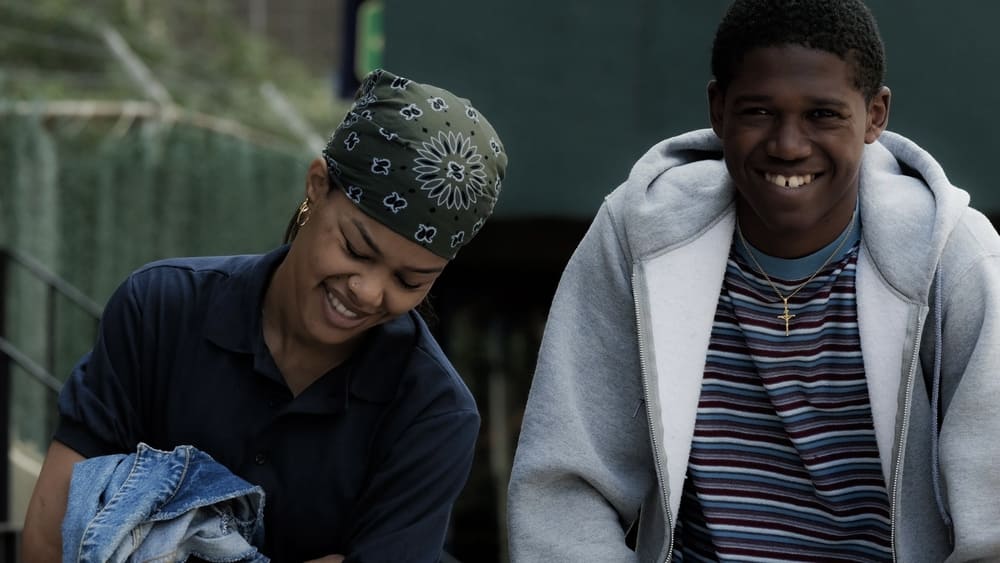-
'A Thousand and One' stumbles when it goes too big
by Mitchel Green - June 11, 2023
|
mitchelgreen34@gmail.com
 source: The Movie Database
source: The Movie Database
For the third year running, the Sundance Grand Jury Prize winner has been released on streaming with minimal theatrical distribution. After “CODA” found itself on Apple TV+ and “Nanny” on Amazon Prime Video, the 2023 winner “A Thousand and One” releases on Peacock, a terrible streaming service with bad UI and an even worse library. It would have been great to see the film in a theater, but the theatrical landscape is not kind to an independent drama like this, only having three showtimes in the city of Louisville this weekend, one of which was in the middle of the workday.
“A Thousand and One” is a film that desperately needs a theatrical viewing experience. On streaming, the intimately-scaled elements still work because watching alone in your home provides a quieter, private experience that matches what’s on screen. But, when streaming a film at home that tries to take a melodramatic emotional swing, watching from your laptop or television doesn’t provide the size and scope to match the feeling. Everything falls flat, and cracks that may have been papered over by pathos if viewed in a theater reveal themselves at home.
The film tracks the story of Inez (Teyana Taylor), a young Black woman recently released from prison who kidnaps her 6-year-old son Terry (Aaron Kingsley Adetola) from the foster care system and tries to start a family with her boyfriend Lucky (Will Catlett). The film follows the family from the mid-90s through the mid-00s, setting the characters’ changing personal dynamics against the ever-changing backdrop of New York City during this period — their community constantly under threat of dissolution at the hands of Guiliani/Bloomberg-era gentrification.
A.V. Rockwell’s direction is confident, making excellent use of the apartment space to create tender, emotionally raw moments when characters struggle to escape conflict between each other in the cramped space. One moment, in particular, breaks this beautifully when Lucky and Inez are fighting. Lucky leaves the apartment, and it’s shot in such a way that makes it seem like the hallway to the door is longer than it is. This makes the scene feel like it’s giving Inez an extra chance to set things right that she doesn’t take, and it is heartbreaking.
The film’s structure is constantly at odds with its presentation, adding a palpable tension. The narrative feels more like a sweeping family melodrama set over several years, and the naturalistic aesthetic and small stakes create a sense of the family trying to find a sense of normalcy among the chaos around them. But eventually, that structure does demand a big emotional payoff, and the way “A Thousand and One” tries to reach that is a forced, unrealistic choice for a film that aims for realism. A plot twist in the third act reveals that Inez is not Terry’s biological mother, a fact that feels so unjustified that it completely co-opts the final 20 minutes to feel worthwhile. It doesn’t work from a narrative or emotional standpoint, and it tanks the ending.
One major narrative decision that may have sunk the final twist is Rockwell’s decision to switch the film’s primary perspective from Inez to Terry in the second and third acts. It draws the viewer’s attention away from Inez and gives us very little information about her growth and life choices from then on, so the twist comes out of nowhere. The film also has to build the audience’s attachment to Terry, who doesn’t have much character in act one apart from being a quiet, occasionally bratty child. We don’t know anything about Terry, and even as the film progresses we learn very little about him. These combine to create characters that aren’t fully formed enough to make that big emotional twist work.
There is a lot of potential in “A Thousand and One” that gives me faith in Rockwell to make great films down the line. As a debut, it is remarkably assured visually, and it creates a vivid snapshot of a time and place that feels detailed and lived in. The characters and story never match up to either of those elements, but her abilities as a director are already stunning. It will be exciting to see what she does next.

